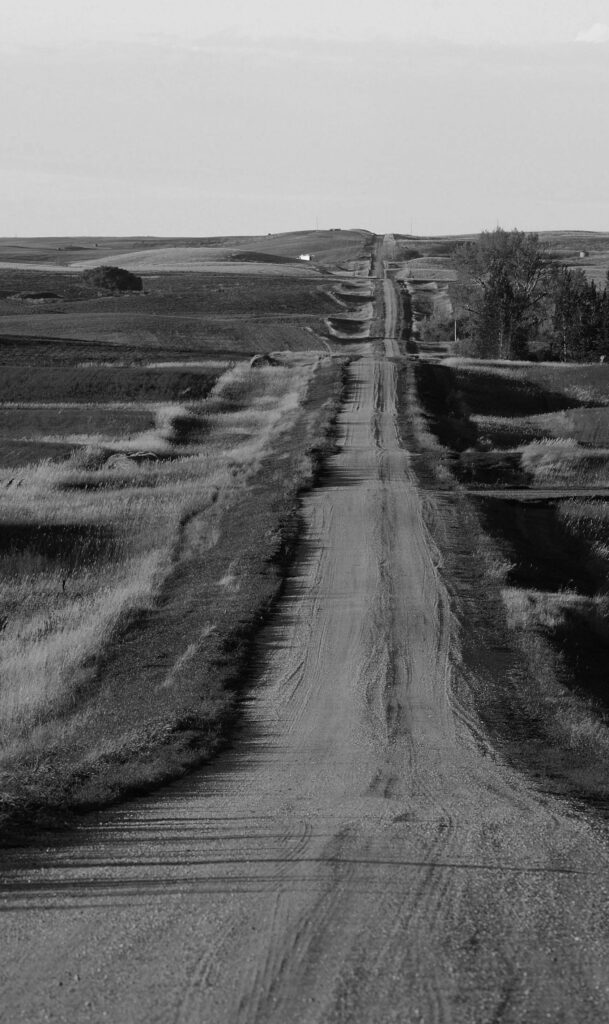While he has lived in Montreal for more than three decades, Matthew R. Anderson feels burdened by having come of age in Saskatchewan with an imperfect understanding of the province’s history. He is a self-described settler descendant, raised in Swift Current at a time when the pioneers who had originated in Europe and eastern Canada were celebrated and there was little public discourse about the clashes between the newcomers and the Indigenous people who had lived there for centuries.
Now a Lutheran minister and a theological studies professor, Anderson grew up hearing about homesteaders building communities and breaking soil for commodity farming — but not about the brutally repressive policies that herded First Nations away from their lands and onto confined reserves. “It’s not that the narratives that many of us grew up hearing were always wrong,” he writes in The Good Walk. “But they were incomplete.”
Indigenous culture was not entirely absent during Anderson’s childhood. Cree terms, for example, have long been used for numerous communities, lakes, rivers, and landmarks. Indeed, the province’s very name derives from kisiskatchewanisipi, the word for “swift-flowing river.” (I spent my childhood a few hundred metres from the South Saskatchewan River, and I could not have told you that.) But there was little historical contextualizing.
The blinkers of settler culture are more frequently discussed and analyzed today, and there have been countless initiatives to bring more nuanced histories to a broader audience in the name of reconciliation. Anderson’s contribution to such efforts is to walk some of the trails traditionally used by Indigenous people. That vast, often forbidding prairie is not the Cotswolds, and the notion of ambling through Saskatchewan by following green paths from pub to pub is risible. But, inspired by a couple of trips on the Camino de Santiago in northern Spain, Anderson saw Saskatchewan pilgrimages as much more than a summertime diversion. If he walked the ancient trails (often beside highways) every other year, he could offer a simple commitment toward decolonization.

On the wide prairies of Saskatchewan.
Thomas Sbampato; Alamy
The Good Walk is dominated by two treks that Anderson and small groups of mostly white friends and relatives made in 2015 and 2017. The first one, about 350 kilometres along Canada’s border with the United States, on Treaty 4 land through the Cypress Hills, is called the North West Mounted Police Patrol Trail, though it’s also known as Traders’ Road. A few members of the Wood Mountain Lakota First Nation politely greeted his group, despite the vigorous efforts of nineteenth-century settlers to starve their ancestors. “Walk the good walk,” an elder told them after a smudging ceremony. There was also puzzled skepticism. When another man saw their packs and walking poles, he asked what they were doing. “You can walk across the prairie all you want, white man,” he said as he slapped Anderson on the back. “Me, I’ll take my Ford.”
Two years later, with a larger group, Anderson followed a similarly lengthy route from Swift Current north to Battleford. This Fort Battleford trail, on Treaty 6 territory, was once used by the NWMP to transport its forces to confront what used to be called the Second Riel Rebellion, which is often referred to now as the 1885 Resistance. Later, those who founded the community of Battleford used it as a supply route to the new Canadian Pacific Railway line further to the south. The 2017 walk differed from the earlier one in a key way: whereas the first trail was largely devoid of Indigenous people, because they had been forcibly removed long before, the north–south one had a comparatively large Indigenous presence. Almost 40 percent of the area’s residents are First Nations, many of them descended from those expelled from the Cypress Hills area.
Anderson tries to discuss the population mix, tying in the brutal events of the past with those of the twenty-first century. On November 27, 1885, eight Cree and Nakota men were hanged in public in Battleford, and students from a newly created residential school were forced to watch. In Anderson’s view, this episode cannot be separated from the 2016 killing of Colten Boushie, a twenty-two-year-old Cree man, by a white farmer, who was acquitted of second-degree murder by an all-white jury. “Anyone looking at the late-nineteenth-century history of the area is irresponsible if not keeping contemporary events such as Boushie’s killing foremost in mind,” he writes.
Boushie’s death is foreshadowed several times in the book, and Anderson worried that the walk toward Battleford “would be a dark pilgrimage in many ways.” Yet little is made of it in the end. As with the earlier trek, we hear mostly from white people who provide meals and places to bunk down; few Indigenous voices are featured. Perhaps this is a result of the geography — overall, the prairies are thinly populated — but there is no flavour in the book of the picaresque encounters that Rory Stewart had in his 2002 walk across Afghanistan, which he chronicled in The Places in Between, arguably a gold standard of travel writing.
Still, The Good Walk has many merits. It may not find a wide audience, but it may change the perceptions of those it reaches by telling new stories about what Anderson calls “the repressed histories of the trails.” He modestly frames his project as a small step in persuading Canadian society to live up to its obligations under Treaties 4 and 6.
It had that effect on me. My grandfather claimed a quarter section in southeastern Saskatchewan soon after arriving from Scotland in 1910, but it hadn’t really occurred to me until reading The Good Walk that this land was almost certainly stolen from a First Nation. In the 1950s and 1960s, I joined in the celebration of the pioneer generation at the summer fair in Saskatoon called Pion‑Era (Anderson sold snack foods at Frontier Days in Swift Current). I hadn’t realized until a historian friend told me recently that the First Nations that also joined in this celebration — hoping to bring their traditional culture to a wider audience — had to receive the permission of a bureaucrat administering the Indian Act.
I may not long to walk the short grass of Saskatchewan, but I’m happy that Anderson did and that he changed my perceptions of my birthplace.
Murray Campbell is a contributing editor to the Literary Review of Canada.

